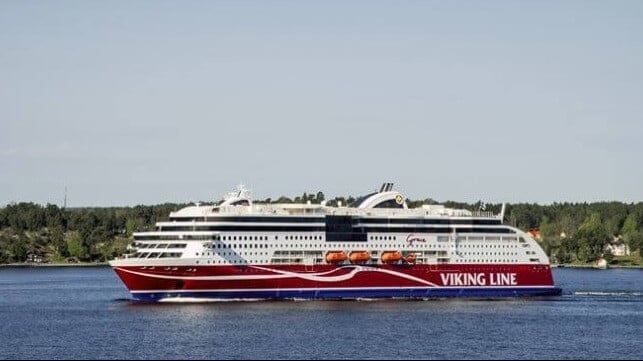Viking Line Route Between Sweden and Finland to Become Green Corridor

Efforts are underway to develop a green shipping corridor between Sweden and Finland that will be one of the first under the initiative to decarbonize shipping and can serve as a basis to expand to other routes. The Finnish Ministry of Employment and the Economy through its business development organization Business Finland is providing nearly $1.6 million in support to the project.
The project, known as Decatrip, aims to develop a carbon-neutral green corridor between Turku, Finland and Stockholm, Sweden through which cargo and passengers can travel. The partners working on the project include shipbuilder Rauma Marine Constructions (RMC), Viking Line, Åbo Akademi University, and Kempower, a developer of electric charging technology. Business Finland has granted funding to RMC, Åbo Akademi University, and Kempower, while Viking Line which is based in Åland is receiving backing from the Government of Åland since Business Finland cannot grant funding to a company from Åland.
“The solutions developed in the project will enable fully carbon-neutral freight and passenger travel between Turku and Stockholm, but the project will also be scalable for other routes,” said Mika Laurilehto, interim CEO of RMC. “This is important since all EU countries, Finland included, have signed on to build green maritime transport corridors.”
Initially, the project will aim to turn the sea route operated by Viking Line carbon neutral. The route between Stockholm and Turku is one of the busiest in the region. Between June and August of this year, Viking Line reports that more than 740,00 people traveled on its two vessels Viking Glory and Viking Grace operating on the route. In 2021, nearly one million people traveled on the route, in addition to cars, trucks, and cargo.
Within the project, RMC is developing energy-efficient solutions for operating the ships, and together with Kempower, for charging electric vehicles on board the ships. Åbo Akademi University, which is a research partner in the project, will be evaluating the societal benefits of the green corridor. PBI Research Institute will coordinate the project. Fuel for the zero-carbon transport is planned to be manufactured locally in southwest Finland.
Dr. Magnus Gustafsson, Research Director in Industrial Management at Åbo Akademi University, estimates that the decarbonization of the Viking Line route between Turku and Stockholm can be achieved within five years.
“We are Finland’s largest maritime transport employer, and our shipping company has the most vessels under a Finnish flag,” said Dani Lindberg, Sustainability Manager at Viking Line in August 2022 detailing the company’s efforts at decarbonization. “We want to be a pioneer in developing and implementing new, environmentally-friendly innovations. For example, Grace and Glory are already equipped to start using biogas or synthetic fuels produced from renewable energy when they become available in the future. That is the next big step towards carbon-neutral maritime traffic.”
Viking reported that its environmental efforts began in the 1980s and in the last 15 years the company says emissions from its vessels have decreased by a third. Carbon dioxide emissions from Viking Line’s vessels have decreased 30 percent per nautical mile since 2008.
In March 2022, five Northern European port authorities announced that they are joining in partnership with the Mærsk Mc-Kinney Møller Center for Zero Carbon Shipping to lay the foundations for a green corridor serving Northern Europe and the Baltic. That initiative involves the port authorities of Gdynia, Hamburg, Roenne, Rotterdam, and Tallinn in a project designed to demonstrate the early commercialization of alternative fuel supply chains and provide a roadmap to scaling the supply chains and create a blueprint for rolling out green corridors in other locations.
